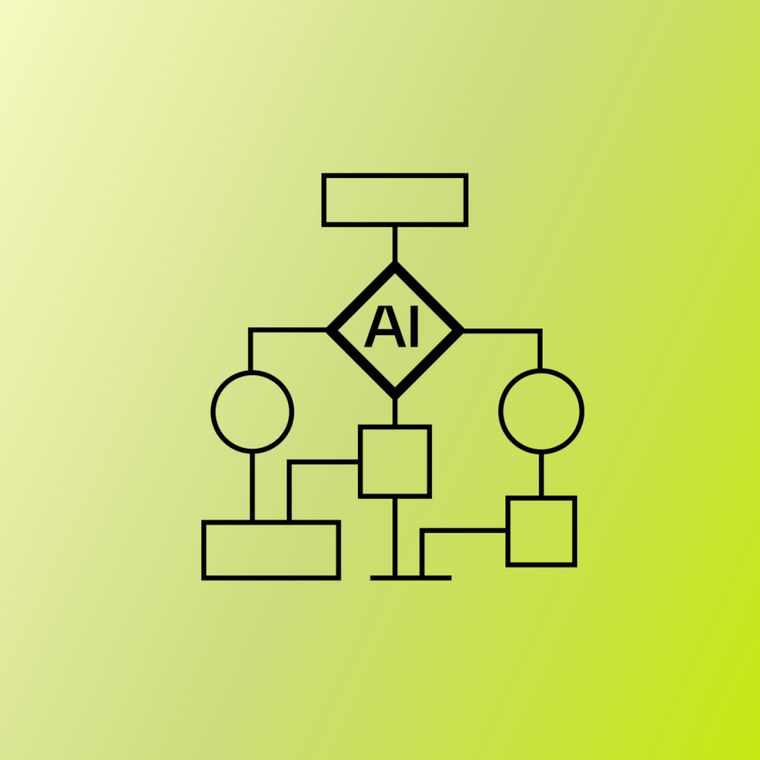Common Threat Assessment Mistakes That Leave Companies Exposed
Avoid common threat assessment mistakes that leave your organization open to attacks.
October 15, 2025
In 2024, cyberattacks hammered critical sectors, including manufacturing (26%), finance (23%), and professional services (18%). Across the critical infrastructure, attackers succeeded through predictable entry points: valid accounts (31%), phishing (26%), and exposed applications (26%). These breaches weren't sophisticated; they exploited assessment blind spots.
Comprehensive threat assessments prevent these attacks by identifying vulnerabilities across your entire attack surface. They reveal how ransomware spreads through unmonitored legitimate tools, and why credential harvesting succeeds through overlooked access points. Without proper assessments, organizations miss critical indicators: unusual account activity, suspicious email patterns, and application vulnerabilities that enable data theft and extortion.
This article identifies eight threat assessment mistakes that tend to leave organizations vulnerable:
1. Treating Threat Assessments as One-and-Done Exercises
Periodic assessments create dangerous blind spots that attackers exploit between annual or quarterly scans. Modern threat actors iterate daily, making calendar-based reviews obsolete the moment you file reports. Industry analysis shows periodic vulnerability management creates widening gaps between known and actual exposure, exactly where breaches occur.
Continuous behavioral AI monitoring recalculates risk every time employees log in, permissions change, or external partners connect. While annual network scans miss misconfigured SaaS APIs that attackers later exploit, real-time analysis flags anomalous API patterns within minutes. Event-driven, behavior-aware assessments transform threat management from paperwork milestones into ongoing defense aligned with actual risks.
2. Overlooking Identity as the New Perimeter
Compromised credentials drive most security breaches, yet threat assessments continue prioritizing network defenses over identity protection. Attackers purchase or harvest stolen credentials, then access email, SaaS applications, and cloud services without triggering traditional security alerts. These authenticated sessions appear legitimate to perimeter security tools that monitor network traffic rather than user behavior.
Modern attacks exploit identity vulnerabilities across multiple vectors. Shadow IT creates unmonitored access points, OAuth tokens grant persistent backdoor access, and privileged accounts enable lateral movement through connected systems. In fact, unmanaged identities are among the fastest-growing attack surfaces, particularly when organizations lack visibility into third-party integrations and personal device use.
Effective identity protection requires behavioral monitoring across all platforms where credentials operate. Account takeover detection analyzes patterns including login locations, session characteristics, and access sequences to identify anomalies. When users suddenly access systems from impossible locations, request unusual OAuth permissions, or escalate privileges outside normal workflows, automated systems flag these deviations before attackers establish persistence.
3. Ignoring Behavioral Context
Traditional evaluations focus on technical indicators like malware hashes, suspicious IPs, failed logins, but miss human actions preceding compromise. Security teams that evaluate only technical facts ignore early warning signs such as veiled threats in email, sudden privilege escalations, and uncharacteristic data access patterns.
When context is missing, minor anomalies escalate into major incidents while static checklists generate false positives, wasting analyst hours. Real threats move quietly while teams chase harmless noise.
Machine learning models learn each user's typical communication cadence, file-sharing habits, and access patterns. Deviations trigger targeted investigations, catching zero-day and insider attacks that rule-based tools miss. AI engines flag supplier invoice requests from unusual devices at odd hours, business email compromise, and attempts to bypass content filters, yet deviate from established patterns.
4. Relying Too Heavily on Checklists
Static checklists confirm controls exist but miss threats that evolve between audits. Compliance frameworks verify that security measures are in place without testing their effectiveness against modern attack techniques. Fixed detection rules flood teams with false positives while sophisticated threats exploit gaps in outdated control lists.
Adaptive risk scoring transforms this approach through continuous learning. Machine learning models automatically adjust to emerging attack patterns without waiting for manual rule updates. The NIST AI Risk Management Framework emphasizes dynamic, context-aware controls that adapt to changing threat landscapes rather than static compliance checkboxes.
Behavioral AI analyzes actual activity patterns instead of matching predetermined rules. This approach reduces false positives by understanding normal behavior variations while detecting genuine anomalies. Security teams redirect hours from alert triage to proactive threat hunting, focusing on sophisticated attacks rather than validating routine deviations.
5. Failing to Prioritize Business Impact
Treating all vulnerabilities equally wastes resources while critical risks remain unaddressed. Effective threat assessment prioritizes vulnerabilities based on actual business impact: revenue loss, regulatory penalties, and operational disruption, not raw vulnerability counts. Security teams must evaluate which systems directly generate revenue, handle regulated data, or support mission-critical operations to establish protection priorities.
Transform Technical Risk Into Executive Intelligence
Business impact analysis identifies revenue-generating processes and acceptable downtime thresholds, establishing clear protection hierarchies. Risk matrices translate technical vulnerabilities into executive-level insights, showing which threats demand immediate attention versus routine patching. This translation enables leadership to understand security investments through familiar business metrics rather than abstract severity scores.
Demonstrate Security Value Through Business Metrics
Real-time risk scoring continuously adjusts priorities based on actual threat activity. When behavioral analytics detect vendor email anomalies, automated blocking prevents wire fraud before millions of dollars are transferred to criminal accounts. Security teams prove value through business-aligned metrics like financial losses prevented, faster detection, and reduced compliance exposure, shifting conversations from cost center to revenue protection.
6. Missing Cloud and SaaS-Specific Threats
Legacy threat assessments built for on-premise networks miss critical vulnerabilities in modern environments. Traditional frameworks scan firewalls and endpoints while overlooking SaaS misconfigurations, API abuse, and cross-channel identity threats that define today's attack surface.
Shadow IT multiplies these blind spots through unsanctioned applications, abandoned API keys, and orphaned OAuth tokens that attackers exploit for persistent access. Organizations unknowingly expose data through file-sharing services, collaboration tools, and third-party integrations that operate beyond traditional security perimeters.
Effective assessment requires API-level visibility across email, Slack, Teams, and SaaS platforms to detect permission changes, configuration drift, and session anomalies. Cloud-native evaluations track protection wherever users work, monitoring behavioral patterns across distributed environments rather than defending static network boundaries.
7. Underestimating Social Engineering
Social engineering attacks succeed by targeting people, not systems. Phishing emails, pretexting calls, and BEC bypass firewalls by convincing insiders to grant access. Understanding human attack surfaces requires the same rigor as scanning ports or patching servers.
Traditional tools hunt for known indicators like malware hashes, suspicious IPs, flagging messages only when signatures match. This fails when attackers write benign messages, impersonate vendors, and request routine transfers.
Language-aware NLP analyzes every message, examining sentence structure, urgency cues, sentiment, and relationship history, correlating signals with identity telemetry. When models detect unusual patterns, such as accountants requesting unscheduled transfers from new addresses, systems automatically quarantine emails and flag accounts. Behavioral detection keeps you ahead of adversaries, weaponizing psychology rather than exploits.
8. Treating Alerts as the End, Not the Beginning
Detection without coordinated response leaves organizations vulnerable despite advanced threat detection capabilities. Confirmed threats should trigger structured workflows that include threat response, restore operations, and the capture of actionable intelligence.
Effective incident response operates in tight, data-driven loops: detect, contain, eradicate, recover, and lessons learned continuously. High-confidence alerts push directly into SIEM or SOAR platforms, opening tickets and launching playbooks that revoke tokens or quarantine messages within seconds.
Automated response collapses mean time to remediate, freeing teams for root-cause analysis. Disciplined post-mortem processes transform every incident into fresh telemetry, improving models. This continuous improvement cycle ensures faster detection and sharper response capabilities.
Smarter Threat Assessments With Abnormal AI
These eight assessment mistakes compound into systemic vulnerabilities that attackers exploit through identity compromise, cloud misconfigurations, and behavioral blind spots. Organizations conducting static, compliance-driven assessments miss the dynamic threats targeting their modern infrastructure.
Effective threat assessment requires continuous evaluation powered by behavioral AI. This approach detects identity misuse across platforms, identifies social engineering attempts through communication analysis, and monitors cloud configurations in real time. Instead of periodic snapshots, adaptive assessment provides intelligence about your actual risk exposure.
Ready to transform your security posture with adaptive threat evaluation? Request a demo to see how Abnormal can revolutionize your organization's threat assessment approach.
Related Posts
Get the Latest Email Security Insights
Subscribe to our newsletter to receive updates on the latest attacks and new trends in the email threat landscape.


